The High Priestess of Biodynamics: Françoise Bedel, a Passionate Advocate of The Practice, Unlocks Meunier’s Potential in Champagne’s Rot and Frost Prone Western Fringe (4-Bottle Pack $399)
In a small estate that is closer to Paris than to Reims, Françoise Bedel has managed a remarkable feat: She has turned an acute family illness into a paradigm shift for much of the Champagne region.
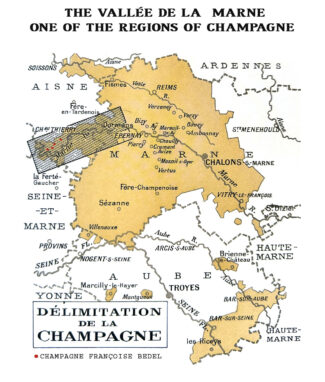
From the village of Crouttes-sur-Marne, nestling the banks of the Marne River, Bedel discovered homeopathic medicine while trying to find a cure for her son Vincent’s hitherto untreatable condition. Vincent, now her winemaker, made a marked improvement, and this how Françoise’s journey to biodynamic viticulture began. In 1982, at a time when virtually no one in the wine world had even heard about it, let alone employed it, she realized that the health of the body and the health of the vineyard may be interchangeable concepts.
She says, “Biodynamics is way of thinking—about the earth, about ourselves, about wine.”
This month’s Champagne package is the output of such iconoclastic thinking—and the tale of wrenching victory from the jaws of illness, cold clay and climate change.
The Vallée de la Marne: Twists and Turns, Patchwork of Soils
In strictly geographical terms, the Marne Valley extends from the city of Tours-sur-Marne to Château-Thierry. It stretches over sixty miles and through two départements, the Marne and the Aisne, all the way to the limits of Seine-et-Marne. As its name indicates, the Marne Valley follows the river, a landscape of rolling hills and small villages. Vines are planted on both banks although those on the north side benefit from a more favorable southern to eastern sun exposure.
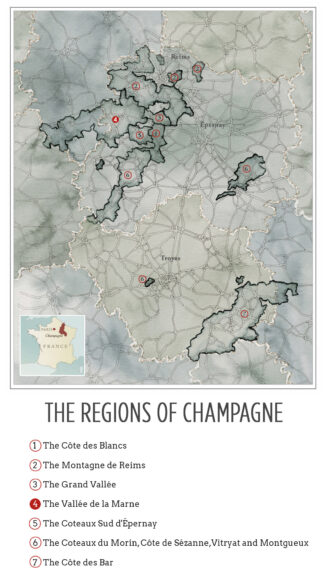
The most famous villages are located at the eastern end of the valley around the city of Épernay, a ranking that reflects the importance given to the presence of chalk in the soil. Chardonnay and Pinot Noir dominate the vineyards of the eastern end of the region, and the major Champagne houses located here include Billecart-Salmon or Philiponnat in Mareuil-sur-Aÿ, Deutz and Bollinger at Aÿ and Jacquesson in Dizy.
West of Châtillon-sur-Marne, chalk tends to be found more deeply buried in the ground; the top soil is made of calcareous clay and clay marls. Meunier is the grape of choice in this part of the valley and it here that a new generation of experimental winemaker has flocked in order to deepen their own (and by proxy) our understanding of this variety.
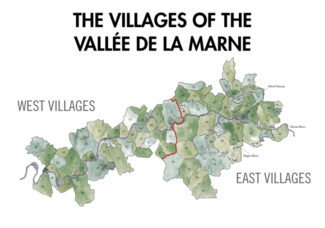
Downriver in Champagne’s Western Fringe: Clay Descends Deeper
The farther west you go in Vallée de la Marne, the thicker the clay deposits become and the more contentious the weather grow; cold air sinks and follows the snaking river. It is in this somewhat inhospitable condition that Meunier begins to show its mettle. An also ran in much of Champagne, here it is king; among the 21,000 acres of Vallée de la Marne vineyard, especially in the west, about 72% is Meunier.
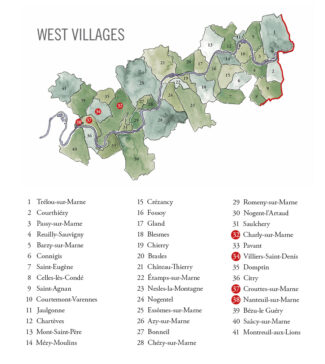
Although Pinot Noir and Chardonnay can both do well with less chalk and more marl, it is the triple threat of valley frost, fog and cooler, clay-heavy soil that tilts the scale towards Meunier. It also helps that the grape is a tad more resistant to botrytis than Pinot Noir or Chardonnay, along the host of other mildews that thrive in the damp, humid conditions encouraged by morning fogs that follow the river.
Meunier Comes Into Focus
A light juice and dark skin grape, Meunier tends to be considered the inferior of the three dominant grapes of Champagne, without the finesse, the liveliness or the delicateness of its illustrious counterparts, Chardonnay and Pinot Noir. Lately, Meunier has been experiencing a comeback and many up-and-coming winemakers are showcasing it in their range. 100% Meunier cuvées are becoming more common and single vineyard Meunier releases are available. In Baslieux-sous-Châtillon, Eric Taillet even launched the ‘Meunier Institut’, entirely dedicated to his (and Françoise Bedel’s) favorite grape.
Champagne Françoise Bedel
Original in Personality, Intensely Soil-Expressive
“For a wine to truly express terroir,” says Françoise Bedel, “one must respect the land’s qualities and characteristics as you would an individual’s personality.”
The 22 acres that make up Champagne Françoise Bedel are spread out on either side of the Marne, Crouttes-Sur-Marne, Nanteuil-Sur-Marne, Charly-Sur-Marne, and Villiers-Saint-Denis. Here vines are between 30 and 70 years old (79 percent meunier) and each plot boasts different subsoils, allowing for blending according to the terroirs and the elaboration of terroir-specific cuvées.
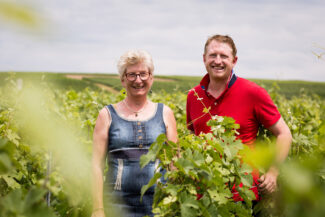
Françoise Bedel and son, Vincent
“These Champagnes are the expression of a rigorous method that brings out and enhances the qualities and particularities of the earth, the vines and the fruit,” Bedel says. “Because I love plants, life in contact with nature, and passing on a healthy land to the next generations, I have been cultivating my vineyard organically since 1998 on the entire estate.”
She is, in fact, only the second generation to tend these vineyards. Her parents, Fernand and Marie-Louise Bedel, turned over a portion of the estate to her in 1979 and with her son Vincent Desaubeau, who has now taken over as winemaker, she forges the future.
The key to the Bedel style is long lees aging, regardless of whether it is vintage or non-vintage; all cuvées go through at least 36 months on the lees in the cellars but more often than not, the wines are not released sooner than five years after harvest, offering pure, assertive flavors with a slight oxidation, equating to some of the finest expressions of Meunier in Vallée de la Marne, and arguably, the world.
Old Soils, New Farming
Compared to much of northern France, especially in the Paris Basin, the soil of Vallée de la Marne is still wet behind the eras. The further from the center of the basin, the older the deposits; Alsace and Burgundy, Metz and Dijon lie largely on Jurassic soils from between 150 and 200 million years old. Champagne, near the center of the depression, sits on soils between about 40 and 150 million years of age.
To this ancient earth Champagne Françoise Bedel brings innovative biodynamics, often numbered by ‘preparation’ and applied at various times in the lunar cycle.
Preparation 500, for example, is a manure concoction that reinforces subterranean biodiversity; vine roots lengthen, deepen and spread more densely and evenly in the soil. Preparation 501 is made of powdered quartz buried inside a cow’s horn, said to help in leaf development and initiating blossoming—it is applied early in the morning, at sunrise. Preparation Maria Thun is a compost of dynamized cow manure, reinforces the process of decomposition. According to Françoise Bedel, “All its ingredients contribute to the development of complex humus clay. A large number of microorganisms improves soil life. After years of research, Maria Thun [a German biodynamics authority who passed away in 2012] was able to document the cosmic influences on plants. The sun, the moon and all the other planets influence in their own manner life on this Earth, be it vegetal, animal, or human.”
Winemaking: Unlocking The Potential
Says Françoise Bedel: “Following my intuition, I propose Champagnes with a strong personality, which beyond being a media lure, has the potential to be a medium at the service of your well-being.”
Unlocking that potential has been the driving force behind the estate’s operations, field to cellar, by the day and by the decade. Nearly everything is done by taste and to pay homage to taste. As Françoise explains, “The date of the harvest is decided after tasting the grapes and analyzing the must from grapes that have just been pressed. The pressing operation is carried out entirely at the domain; a good pressing preserves the potential longevity of the wine by being carried out in a gentle manner. The fractioning of the juice from the different grape varieties and terroirs allows for an additional selection, again, by taste alone.”
She goes on: “We further unlock the potential of the harvest by vinifying partially in oak barrels to reinforce the richness and the aromatic complexity. The other part is vinified in small enameled vats to enhance the purity of the terroirs. The contents of each vat are clearly identified by the parcel of land and the racking is carried out under conditions that are in keeping with Maria Thun’s lunar calendar.”
Blending: A Leap Into The Future
As a painter chooses his pigments or composer writes a symphony with various instruments in harmony, the assemblage of a Champagne maker must take all elements, the obvious and the subtle, into consideration. And more: The essential notes of symphony will not change with time and the paintings in the Louvre are the same ones once viewed by our great grandparents. Wine, however, is a mutable substance, ever undergoing the ravages or the enhancements of time.
Rather than paint or musical notes, the raw material of wine is geology, exposure, place of origin and specific parcels contribute to the organoleptic qualities of grape juice. The marriage of aromatics and flavors to create a synergistic whole is the art of the cellar master; many tests are carried out and multiple opinions gathered before proceeding with final blends. These decisions are critical since the outcome is irreversible and unique, intended to express the personality and preferences of the winemaker.
“The actual blending is a leap into the future,” says Françoise. “In point of time, it is never rushed; it can take from a few days to a few weeks.”
Bedel’s Multi-Village Champagne
The villages of Champagne each carry with them individual stories—some approaching a legendary status; 319 of them, under the system called the Échelle des Crus, are rated on a scale with ascending degrees of excellence. A winemaker, following strictures, may label Champagne with the name of a specific village or combine several in the foundational regional concept of blends.
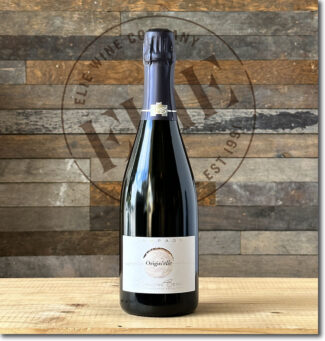 Champagne Françoise Bedel ‘Origin’elle’, Brut ($91)
Champagne Françoise Bedel ‘Origin’elle’, Brut ($91)
Predominantly 2017 with reserve wines. 70% Meunier, 20% Chardonnay, 10% Pinot Noir, relying on a terroirs (both silty limestone and calcareous clay) intended to produce a Champagne that emphasizes freshness and crisp primary fruit flavors. It is fermented in enamel-lined tanks and neutral French oak barrels and sees 3 years of aging sur latte before disgorgement; finished with a minimal dosage of 1.6 grams/liter. Disgorgement Date: April 2021.
Bedel’s Site-Specific Expressions
Traditionally, of course, Champagne is a blend of wines from a particular year, often from separate plots, mixed with reserve wines from previous harvests. This is a technique which has allowed a winemaker to ensure that his wine has a certain taste stability—a house style that remains constant from one year to the next. Otherwise, as in much of the wine world, a label tends to reflect only an estate while the product changes in taste and quality depending on the year and the climate.
Plot specific wines, known as lieux-dits in Burgundy, are based on the theory that certain groupings of vines have unique characteristics that directly influence the development and aromatic concentration of the grapes. These are usually natural conditions specific to the vineyard location, such as its orientation, the presence of a forest or a mineral outcrop on the surface. In Champagne, a ‘clos’ is usually a walled-off portion of a vineyard identified by a winegrower for its natural potential. This artificial barrier creates a microclimate specific to this plot which will, over the years, develop its own aromatic identity. Given these specificities, one can better understand why many of the winegrowers who are lucky enough to own such plots of land decide to produce cuvées that are parcel-based and very often vintage wines.
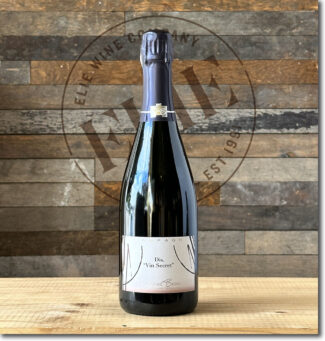 Champagne Françoise Bedel ‘Dis, “Vin Secret”‘, Extra-Brut ($91)
Champagne Françoise Bedel ‘Dis, “Vin Secret”‘, Extra-Brut ($91)
Predominantly 2015 with reserve wines. 95% Meunier, 5% Pinot Noir; biodynamics informs the discreet minerality of ‘Say, Secret Wine’ which braces notes apple pie, freshly-baked croissant, quince and buttercream frosting ending with a vibrant note of baking spice. Disgorgement Date: June 2021.
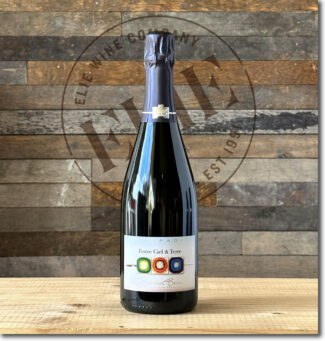 Champagne Françoise Bedel ‘Entre Ciel et Terre’, Harvest 2015, Extra-Brut ($105)
Champagne Françoise Bedel ‘Entre Ciel et Terre’, Harvest 2015, Extra-Brut ($105)
Predominantly 2015 with reserve wines. Half Meunier, 20% Chardonnay and 30% Pinot Noir, ‘Between Heaven and Earth’ is extra-brut Champagne made from vines between 30 and 70 years old. After spending three years sur latte, the wine produced is fresh, aromatic nose reminiscent of white acacia and, on the explosive palate, offers clover honey and spice bread. Disgorgement Date: June 2021.
Bedel’s Vintage Champagne
No mumbo-jumbo wine lexicography here; vintage Champagne is made from the harvest of a single year. As it is generally only made in superior vintages, frequently only three to four times every decade, it may fairly be viewed as an indicator of quality.
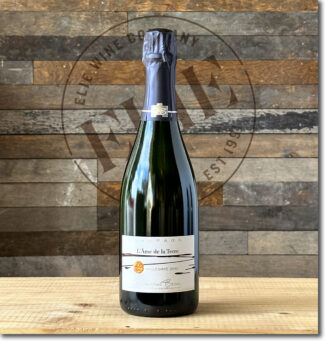 Champagne Françoise Bedel ‘L’Âme de la Terre’, 2010 Extra-Brut ($117)
Champagne Françoise Bedel ‘L’Âme de la Terre’, 2010 Extra-Brut ($117)
From the 2010 vintage, ‘The Soul of the Earth’ was tasted blind by Françoise Bedel before it received the final go-ahead to be declared a vintage. 90% Chardonnay with 5% each of Pinot Noir and Meunier, the wine spent a full decade ‘sur latte’, or stacked on racks to develop in the bottle in a cellar environment. The wine reflects the intensity of Madame Bedel’s personality and is a tour de force for the estate, showing generous fruitiness, tropical as well as rich and generous stone fruits, sapid on the palate with tension and backbone and a lovely savory finish. Disgorgement Date: November 2021.
Notebook ….
Drawing The Boundaries of The Champagne Region
Having been defined and delimited by laws passed in 1927, the geography of Champagne is easily explained in a paragraph, but it takes a lifetime to understand it.
Ninety-three miles east of Paris, Champagne’s production zone spreads across 319 villages and encompasses roughly 85,000 acres. 17 of those villages have a legal entitlement to Grand Cru ranking, while 42 may label their bottles ‘Premier Cru.’ Four main growing areas (Montagne de Reims, Vallée de la Marne, the Côte des Blancs and the Côte des Bar) encompass nearly 280,000 individual plots of vines, each measuring a little over one thousand square feet.
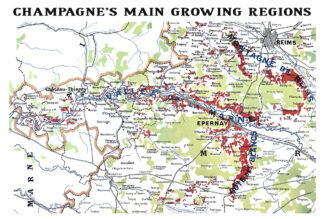
The lauded wine writer Peter Liem expands the number of sub-regions from four to seven, dividing the Vallée de la Marne into the Grand Vallée and the Vallée de la Marne; adding the Coteaux Sud d’Épernay and combining the disparate zones between the heart of Champagne and Côte de Bar into a single sub-zone.
Lying beyond even Liem’s overview is a permutation of particulars; there are nearly as many micro-terroirs in Champagne as there are vineyard plots. Climate, subsoil and elevation are immutable; the talent, philosophies and techniques of the growers and producers are not. Ideally, every plot is worked according to its individual profile to establish a stamp of origin, creating unique wines that compliment or contrast when final cuvées are created.
Champagne is predominantly made up of relatively flat countryside where cereal grain is the agricultural mainstay. Gently undulating hills are higher and more pronounced in the north, near the Ardennes, and in the south, an area known as the Plateau de Langres, and the most renowned vineyards lie on the chalky hills to the southwest of Reims and around the town of Épernay. Moderately steep terrain creates ideal vineyard sites by combining the superb drainage characteristic of chalky soils with excellent sun exposure, especially on south and east facing slopes.
Three Primary Varieties and Four Heirloom Grapes
Champagne, with few exceptions, is a blended wine. Chardonnay, Pinot Noir and Meunier are the trinity that form the bulk of these blends; a handful of heirloom grapes that have official government sanction in certain locations within the AOP.
Although they make up fewer than 0.3% of planted acres, with the dramatics being wrought by climate change, these other varieties may find a more prominent role in future blends:
Arbane is a late-ripening variety that succumbs easily to bad weather, and yet—under ideal conditions—produces a Champagne with remarkable finesse, offering nuanced notes of hawthorn blossom and carnation and as well as peach, apple and quince.
Petit Meslier is another milktoast variety, highly susceptible to disease and frost. But when it produces, it does so with both barrels, bringing a smoky quality to the wine that makes it identifiable, even when used in small quantities.
Pinot Gris and Pinot Blanc, both white cousins to red Pinot Noir are low in acidity and somewhat easier to work with than Arbane or Meslier, although like Pinot Noir, Gris may be somewhat finicky. Both bring to blend their own magic; Gris offers a nutty quality to the finished wine and Pinot Gris adds punch and body.
- - -
Posted on 2023.09.27 in France, Champagne, Wine-Aid Packages
Featured Wines
- Notebook: A’Boudt Town
- Saturday Sips Wines
- Saturday Sips Review Club
- The Champagne Society
- Wine-Aid Packages
Wine Regions
Grape Varieties
Aglianico, Albarino, Albarín Blanco, Albarín Tinto, Albillo, Aleatico, Arbanne, Aubun, Barbarossa, barbera, Beaune, Biancu Gentile, bourboulenc, Cabernet Franc, Cabernet Sauvignon, Caino, Caladoc, Calvi, Carcajolu-Neru, Carignan, Chablis, Chardonnay, Chasselas, Clairette, Corvina, Cot, Counoise, Erbamat, Ferrol, Fiano, Frappato, Friulano, Fromenteau, Fumin, Garnacha, Gewurztraminer, Godello, Graciano, Grenache, Grolleau, Groppello, Juan Garcia, Lambrusco, Loureira, Macabeo, Macabou, Malvasia, Malvasia Nera, Marsanne, Marselan, Marzemino, Melon de Bourgogne, Merlot, Mondeuse, Montanaccia, Montepulciano, Morescola, Morescono, Moscatell, Muscadelle, Muscat, Natural, Nero d'Avola, Parellada, Patrimonio, Petit Meslier, Petit Verdot, Pineau d'Aunis, Pinot Auxerrois, Pinot Blanc, Pinot Gris, Pinot Meunier, Pinot Noir, Poulsard, Prieto Picudo, Rondinella, Rousanne, Roussanne, Sangiovese, Sauvignon Blanc, Savignin, Semillon, Souson, Sparkling, Sumoll, Sylvaner, Syrah, Tannat, Tempranillo, Trebbiano, Trebbiano Valtenesi, Treixadura, Trousseau, Ugni Blanc, vaccarèse, Verdicchio, Vermentino, Viognier, Viura, Xarel-loWines & Events by Date
- April 2024
- March 2024
- February 2024
- January 2024
- December 2023
- November 2023
- October 2023
- September 2023
- August 2023
- July 2023
- June 2023
- May 2023
- April 2023
- March 2023
- February 2023
- January 2023
- December 2022
- November 2022
- October 2022
- September 2022
- August 2022
- July 2022
- June 2022
- May 2022
- April 2022
- March 2022
- February 2022
- January 2022
- December 2021
- November 2021
- October 2021
- September 2021
- August 2021
- July 2021
- June 2021
- May 2021
- April 2021
- March 2021
- February 2021
- January 2021
- December 2020
- November 2020
- October 2020
- September 2020
- August 2020
- July 2020
- June 2020
- May 2020
- April 2020
- March 2020
- February 2020
- January 2020
- December 2019
- November 2019
- October 2019
- September 2019
- August 2019
- July 2019
- June 2019
- May 2019
- April 2019
- March 2019
- February 2019
- January 2019
- December 2018
- November 2018
- October 2018
- September 2018
- August 2018
- July 2018
- June 2018
- May 2018
- April 2018
- March 2018
- February 2018
- January 2018
- December 2017
- November 2017
- October 2017
- September 2017
- August 2017
- July 2017
- June 2017
- May 2017
- April 2017
- March 2017
- February 2017
- January 2017
- December 2016
- November 2016
- October 2016
- September 2016
- August 2016
- July 2016
- June 2016
- May 2016
- April 2016
- March 2016
- February 2016
- January 2016
- December 2015
- November 2015
- October 2015
- September 2015
- August 2015
- July 2015
- June 2015
- May 2015
- April 2015
- March 2015
- February 2015
- January 2015
- December 2014
- November 2014
- October 2014
- September 2014
- August 2014
- July 2014
- June 2014
- April 2014
- March 2014
- February 2014
- January 2014
- December 2013
- November 2013
- October 2013
- September 2013
- August 2013
- July 2013
- June 2013
- May 2013
- April 2013
- March 2013
- February 2013
- January 2013
- December 2012
- November 2012
- October 2012
- February 2004
Search



